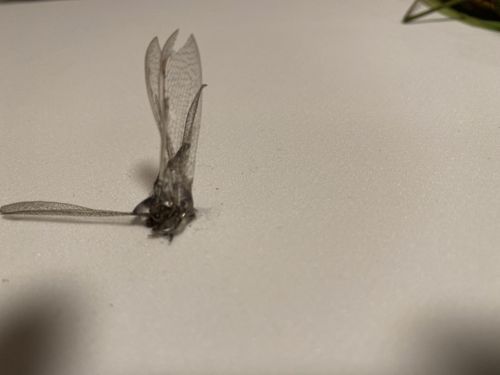Mayfly
Scientific Name: Ephemeroptera (various genera and species)
Order & Family: Order: Ephemeroptera, Family: Various (e.g., Baetidae, Heptageniidae)
Size: Adults range from 3 to 30 millimeters (0.12 to 1.2 inches) in body length, excluding their tails (cerci).

Natural Habitat
Adult mayflies are typically found near freshwater bodies such as rivers, streams, lakes, and ponds. Their aquatic nymphs (naiads) live in specific freshwater habitats depending on the species, which can range from fast-flowing streams to stagnant ponds.
Diet & Feeding
Adult mayflies generally do not feed as their mouthparts are vestigial (non-functional) and their lifespan is very short. Their purpose is primarily reproduction. The aquatic nymphs are primarily herbivorous, feeding on algae, diatoms, and detritus, though some species are detritivores or even carnivorous.
Behavior Patterns
Mayflies undergo incomplete metamorphosis (hemimetabolism) with distinct egg, nymph (naiad), and adult stages. Nymphs live in water for months to years, molting multiple times. They emerge from the water as winged subimagos (dun), which then molt once more into sexually mature adults (imagos). Adults have a very short lifespan, often only a few hours to a few days, dedicated solely to mating and laying eggs. They are known for synchronized mass emergences, sometimes forming massive swarms.
Risks & Benefits
Mayflies are indicators of good water quality, as most species are sensitive to pollution. Their nymphs are a crucial food source for fish, birds, and other aquatic and terrestrial predators, making them vital to freshwater ecosystems. Swarms of emerging adults can be a nuisance near water bodies, creating slippery surfaces on roads and accumulating in large numbers, but they pose no direct risk to humans (they do not bite or sting). Their mass emergences and subsequent death provide nutrient input to ecosystems.
Identified on: 9/15/2025